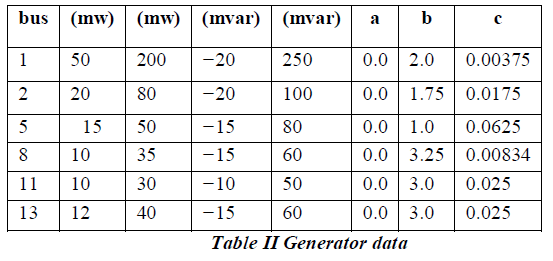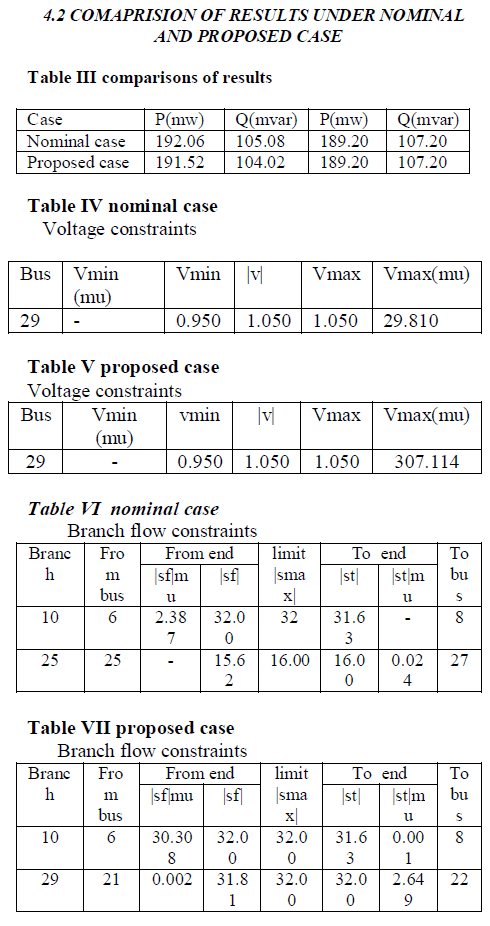ISSN ONLINE(2319-8753)PRINT(2347-6710)
ISSN ONLINE(2319-8753)PRINT(2347-6710)
| Dr. A. Mukunthan & Ms.S.Sudha Department of Physics, Bharath Institute of Higher Education And Research, Chennai – 600073, India |
| Related article at Pubmed, Scholar Google |
Visit for more related articles at International Journal of Innovative Research in Science, Engineering and Technology
The application of spectroscopy for the study of biomedical compounds has been increased tremendously in recent years. Blood is the chief circulatory medium in our body and participates in every functional activity organ by circulating them. The study of composition of blood in one of the fascinating branches of clinical medicine. With the onset of a diseases or with the deficiencies in the major constituents of the blood, the relative contents of the bio molecules of blood changes there by producing pathophysiological changes in the functions. Spectroscopic techniques can be effectively used as a diagnostics tool in clinical chemistry and it can be an alternative method in clinical analysis. In the present work FTIR spectroscopic techniques is used to study the spectral difference between the serum normal healthy subject and that of diseased one (malnutritioned).
Keywords |
| Healthy (normal) subject, diseased of malnutritioned subjects, blood serum FTIR spectra, air technique, proteins, lipids, glucose (carbohydrates absorption level and internal standards). |
INTRODUCTION |
| Blood is a fluid which circulates in a closed system of blood vessels. Blood contains about 55%of plasma and 45%of cellular fractions consisting of formed elements. The cellular fraction is composed of three types of cells Viz., erythrocytes or red blood corpuscles (45,00,000-60,00,000),leukocytes or white blood corpuscles (5000 - 10,000) Thrombocytes or blood platelets (2,00,000 - 4,00,000). The fluid portion plasma contains a large number of organic and inorganic substances such as proteins, vitamins, minerals, lipids etc. although the main function of the blood is to transport various materials to all the cells of the body, blood also provides the temperature regulating land defense mechanism1,2,3. There is a wide fluctuations in the number of various formed elements present in the blood of healthy subjects and that of affected by diseases (malnutritioned) with a onset of a diseases the relative content of the biomolecules changes, there by producing pathophysiological biological change in their functions. |
II.EXPERIMENTAL |
| Blood samples have been collected from normal healthy persons and diseased affected one from a medical care center and healthy animals and diseased animals(malnutritioned)from veterinary medical care center, chennal, India. All the samples have been analysed in the serum form. A volume of 1ml of serum has been diluted with 4mg/l aqueous solution of potassium thio cyanate (KSCN) 20μl of each diluted sample was spread evenly over a free surface circular KBr window and air dried for 30 min prior to measure IR spectra to eliminate the absorption band of water. The FTIR spectra of the serum samples have been recorded over the region 4000-400 cm-1using BRUKER MODEL IFS66V,double beamFTIR spectrometer, IIT, Chennai, India. All the spectral have been base line corrected and are normalized in the absorption mode to occur identical data. |
III.RESULT AND DISCUSSION |
| The spectra of normal serum and that of diseased (mal nutiritioned)serum samples are all distinct from one another, but are dominated mainly by the absorption of the protein constituents which provides the selectively in IR based serum analysis.Fig 1.4 present the FTIR spectra of human, cattle dog and poultry serum samples along with normal serum respectively. A satisfactory vibrational band assignment of the absorption bands of the spectra is done with the idea of the group frequency of the various constituents of the serum sample4,5. Table -1 present the vibrational band assignment of human cattle ,dog and poultry gives two sharp bands at 3292-3068cm-1 is due to the N-H stretching vibration of the secondary amide of protein, which in blood serum for human and some animals like cattle and dog. But the spectra blood serum of poultry gives two sharp bands at 3292-3068cm-1 for normal and 32927 &3079cm-1 for diseased which are the characteristic bands for primary amies. This is a specialty and that differentiate the serum of poultry from others. The asymmetric and symmetric stretching vibration of methyl(CH3) groups of the proteins and lipids are found to be present in the region 2960-2975cm-1 and 2845-2875cm-1 for different samples. The other two asymmetric and 2845-2850cm-1 for symmetric stretching vibration of the methyline(CH2) group. |
| The strong absorption band(SharpPeak) present in the region 1650-1660cm-1 is attributed to C=O stretching of amide of the proteins. Similarly the presenceof band in the region 1540-1545cm-1 is due to the amide(or)N-H bending vibration that are strongly coupled to the C=N stretching vibration of the proteins amide groups. The peaks in the region 1440-1455cm-1 , 1400-1405cm-1 and 1300-1316cm-1 are considered to be due to asymmetric deformations of methyl groups of proteins. The peak in the region 1400-1412cm-1 may also be considered due to COO stretch of ionised acid chains suggesting an contribution from carboxalate. The lipid phosphate band(PO2) due to the symmetric P-O stretching vibration is found to exists in the region 1215- 1245cm-1 the spectral region 1240-920cm-1 is predominantly occupied by the C-O stretching vibration of glucose. The absorption peaks at 1180, 1165,1130,1040cm-1 are considered to due to the different C=O stretching vibration of C-O-H and C-O-C bands. The weak absorption band in the region 955-960cm-1 is considered to be due to P-O symmetric stretching of the phosphate band of proteins. The strongest vibration band in the region 1650-1680cm-1 is assigned to N-H out of plane bending with the contribution of C=N torsional vibrations. Thus I.R . spectra provides various useful information of a bimolecule like structure, functional groups, types of bonds and their interactions. Hence the FTIR spectra of all the serum samples both the normal and diseased (malnutritioned) shows the corresponding absorption bands in the specific regions only .But quantitatively(absorption level) there is a considerable spectral differences between the normal and diseased serums. The absorption is directly proportional to the concentration. Hence serum samples are analysed quantitatively by calculating the intensity ratio among the absorption peaks. |
IV.CARBOHYDRATES |
| The well known substances of carbohydrates are sugar (C6H12O6) starch (C6H10O5) n and celluse (C6H10O5 )n. The name carbohydrate is derived from the fact that compounds of this class are containing carbon, hydrogen and oxygen. In this the hydrogen and oxygen are present in ratio as that found in water. Generally carbohydrate can be represented by the formula CxH2YOy where x and y may be same or different carbohydrates or polyfunctional groups. They contain two types of functional groups. (a) The hydroxyl group (b) The carboxy group. The presence of carbohydrates is confirmed in the sample by observing this C=O stretching band at around 1230cm-1 for healthy and 1241cm-1 for malnutritioned one. |
V.CONCLUSION |
| Spectroscopy has been employed as a diagnostic tool in the study of blood. FTIR spectroscopic method has been employed to study the normal and malnutritioned (under growth) blood samples the internal standards among the absorptions peaks are calculated and its clearly indicates how a malnutritioned (diseased) blood serum is different from a normal one. The absorbance levels ratio or internal standard ratio are due to C=O stretching in normal & malnutritioned samples are listed below(1242cm-1). It is evident from the spectra that there is a deficiency of protein and carbohydrates in malnutritioned animals and human blood serum samples. This amino acids cannot be synthesized by the body (Non- essential or indispensable proteins) and must be supplied by the proper diet given to the animals and human and to rectify this deficiencies, there by promoting the proper growth of animals & repairing of cells. |
 |
 |
 |
 |
ACKNOWLEGEMENT |
| We express our deep sense of gratitude to our beloved and respectable chairman, vice chancellors, Mr. & Mrs. Prof chancellors, registrar & deputy Registrar, Dean R&D for their continuous support& encouragement for our research activities. Dr.A.Mukunthan & S.Usha are particularly thankful to principal of pachaippas college chemmai & Dr.Gunasekaran for giving valuable guidance & suggestion for this research work. We are thankful to the director IIt Chennai Dr.A.K.Mishra and HOD. RSIC and faculaty members Mrs. Bhavani for their kind and timely help to take their FTIRspectrum in their campus. We are thankful for Dr.S.Mohan HOD of physics and Pondicherry university for his inspring guidance given to us. Also we are thankful to Dr.Sundra Vathanam for collecting the blood serum in the short period and Dr.K.Rangarajan, Dean of science and humanities for the encouragement given for research activities. |
References |
|